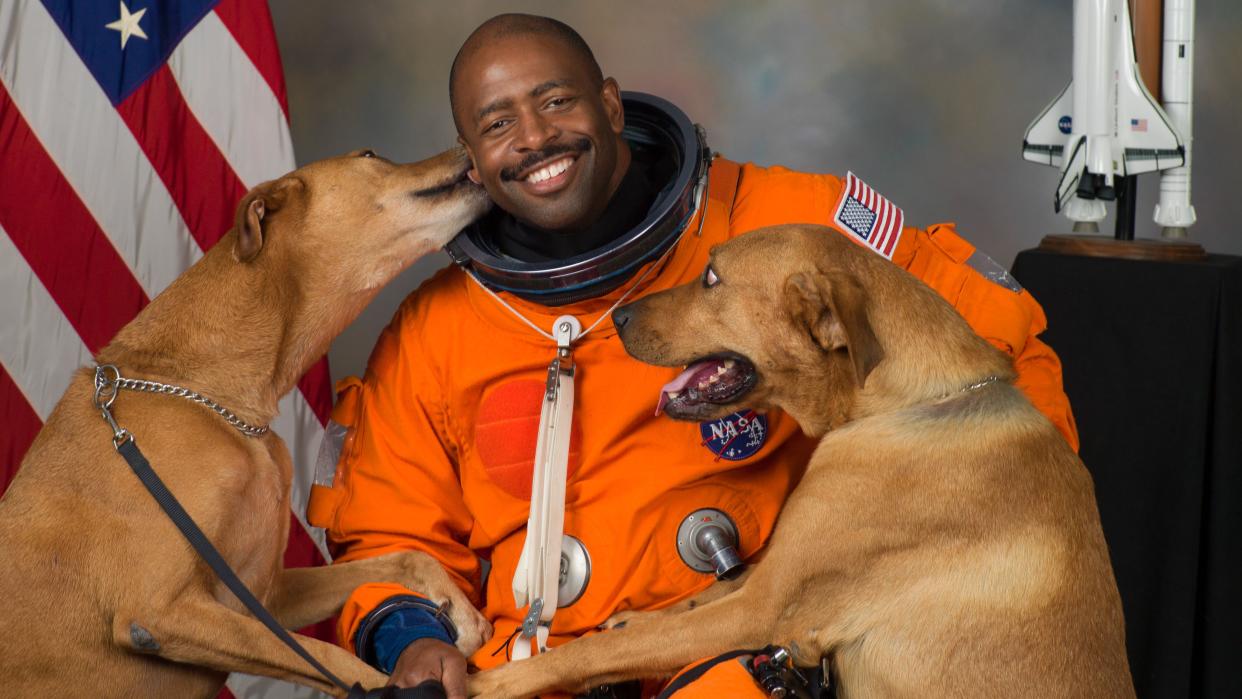NASA astronaut Leland Melvin talks Black history, education and dogs (exclusive)

- Oops!Something went wrong.Please try again later.
Retired NASA astronaut Leland Melvin says he still loves working with kids to explore the final frontier.
Melvin, accompanied by dogs Zorro and Roux, told Space.com he wants to help kids "pursue their space dream" through online classes, such as through his ongoing partnership with Varsity Tutors that gives sessions for free.
"We get all these kids coming on to watch and listen about space and science, and some of them are going to be that next generation of explorers. It's very exciting," said Melvin, emphasizing the free price point allows all kinds of kids to participate.
"Together, you'll break down the lessons behind some of the space program's greatest discoveries and achievements, and you'll learn how to employ the scientific method to make great discoveries and inventions of your own," reads the description for the new Varsity Tutors class, which runs Wednesday (June 21) at 6 p.m. EDT (2200 GMT).
Related: NASA astronaut Leland Melvin teaches kids about the James Webb Space Telescope
Melvin, also a former NFL draftee, flew twice in orbit during the space shuttle program: During STS-122 in 2008, and STS-129 in 2009. He also served as NASA's associate administrator for education before retiring in 2014.
One of Melvin's space education highlights was participating in a broadcast in 2009 with journalist Tom Joyner, who is Black, to commemorate the first two Black men flying in space on the same mission: Melvin, and NASA astronaut Robert Satcher.
"There were these people on the ground that were stopping their cars to have their kids listen to this, because they were talking about history," Melvin said of the broadcast.
"After we had that event, I remember getting back home. People sought me out to tell me that they're going to go into aerospace engineering, they're going to go into this, because they heard that."
Related stories:
— NASA astronaut Jessica Watkins to become first Black woman on ISS crew
— Victor Glover becomes 1st Black astronaut to arrive at space station for long-term stay
— Interview with Bernard Harris, the 1st African-American spacewalker
Melvin emphasized that regardless of educational background and privilege, kids (or kids at heart) still have the ability to use curiosity and other skills to critically use science in all they do. It's something he still tries to use in his own life.
"I am much older than most of the kids we teach," Melvin joked, "but I'm still having fun riding my bicycle, playing with my dogs, being curious, looking at the night sky. [When] seeing the space station going overhead I'm wondering, 'what's going at 17,500 miles per hour?'"
Melvin added that in a world full of complexity, the scientific method teaches us to "be curious to solve problems, and build things, and create things."

